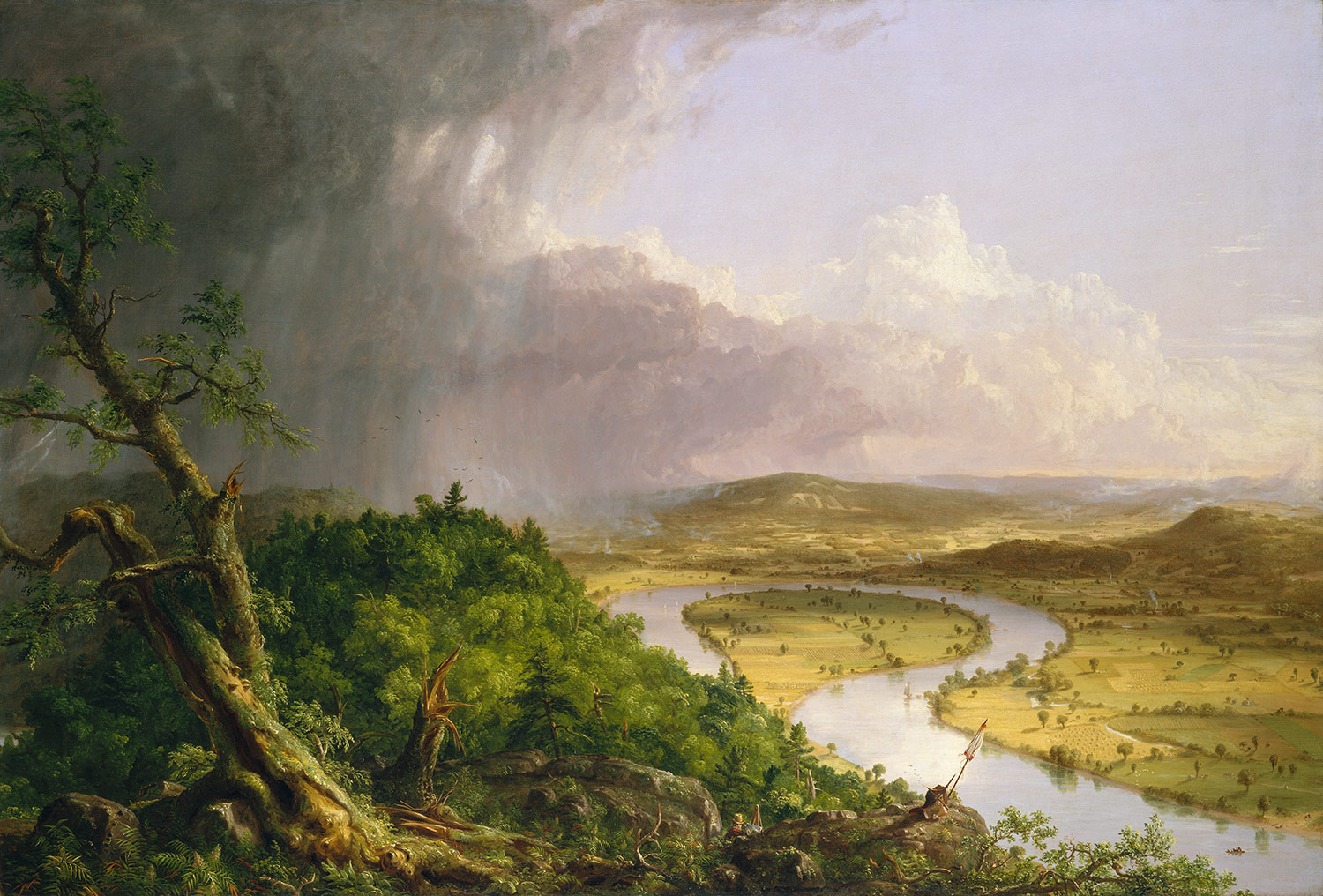 |
| Thomas Cole's "Oxbow" |
The "sublime" image in "Oxbow" is the massive, captivating scene from Mount Holyoke to the farmland below. On the left, the approaching storm clouds embody and almost omnipotent perspective. The right represents the world of man, the "better" side because it is more peaceful and familiar to the audience. The broken tree stump in the foreground represents a connection between the two halves. Cole called it "memento mori" or reminder that life is not permanent and that only Nature and the Divine are eternal. It was through pieces such as "Oxbow" that Thomas Cole illustrated his belief in the connection between beauty and good. Cole believed that the beautiful landscapes of America represented the opportunity the country had.
Alexis de Tocqueville expressed views opposite of Thomas Cole in Democracy in America. Tocqueville believed that natural landscape did not/would not play an important role in the American cultural consciousness and other forces such as religion and the legal system would play a larger role. Tocqueville also believed that American's were more concerned with subduing nature tahtn perserving it, that the focus was more geared towards technology and expansion rather than conservation.
The opposing viewpoint of Cole and Tocqueville represent the continuous debate over American attitudes towards nature. The jury is still out concerning whether or not American society values its unique landscapes. On one hand, America has a multitude of national parks and works towards conservation. On the other hand, American capitalism has quickly consumed many natural landscapes and our increasingly polluted environment is evidence of indifference.
So, if we side with pessimism Tocqueville once again serves as a forecast of America's future. I'm curious as to what my classmates will think. Which is more correct, Cole's idealistic view or Tocqueville's prediction of neglect towards nature?

